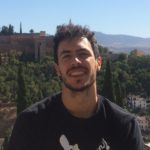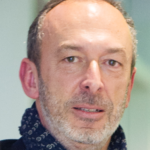Link to DOI – 10.1109/TPAMI.2022.3202855
From meteorology to medical imaging and cell mechanics, many scientific domains use inverse problems (IPs) to extract physical measurements from image movement. To this end, motion estimation methods such as optical flow (OF) pre-process images into motion data to feed the IP, which then inverts for the measurements through a physical model. However, this combined OFIP pipeline exacerbates the ill-posedness inherent to each technique, propagating errors and preventing uncertainty quantification. We introduce a Bayesian PDE-constrained framework that transforms visual information directly into physical measurements in the context of probability distributions. The posterior mean is a constrained IP that tracks brightness while satisfying the physical model, thereby translating the aperture problem from the motion to the underlying physics; whereas the posterior covariance derives measurement error out of image noise. As we illustrate with traction force microscopy, our approach offers several advantages: more accurate reconstructions; unprecedented flexibility in experiment design (e.g. arbitrary boundary conditions); and the exclusivity of measurement error, central to empirical science, yet still unavailable under the OFIP strategy.


